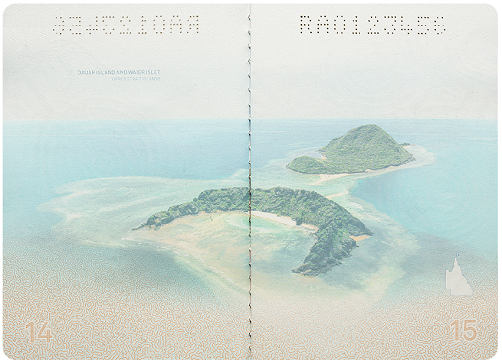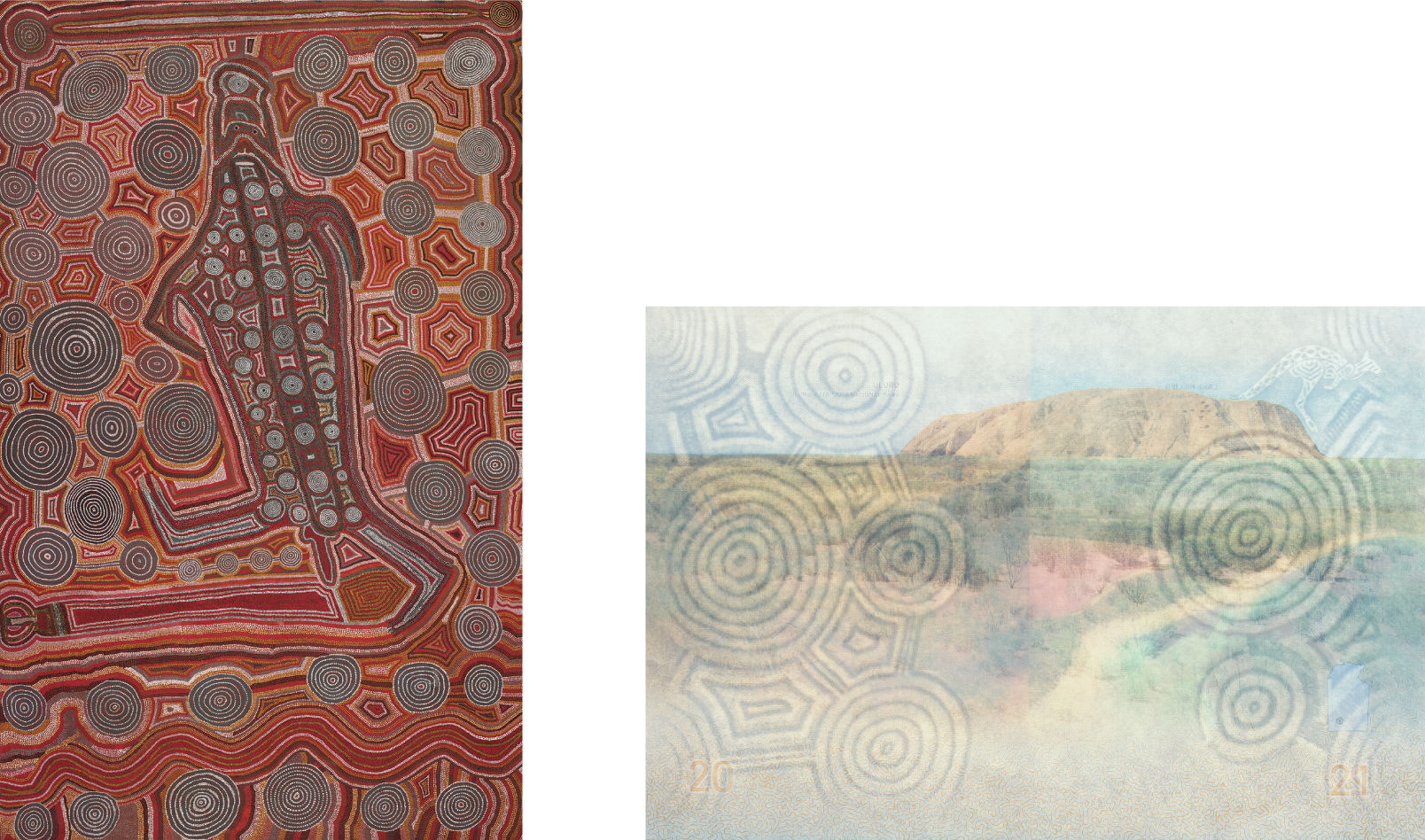The R Series passport takes you on a visual journey around Australia. The inside front and back cover pages represent the East and West Australian coastlines, and the visa pages showcase 17 iconic landscapes from across the country.

Uluru, in the Northern Territory, and the Dauar Island and Waier Islet, part of the Torres Strait Islands, are examples of the iconic landscapes featured in the R Series passport.
Uluru, Uluru-Kata Tjuta National Park
Uluru is a large sandstone landmark located in the Northern Territory. It is often referred to as the ‘red centre’ of Australia. To symbolise this, the image of Uluru is placed in the centre pages of the R Series passport.
The stitching that holds the passport together is most noticeable on the centre pages. In normal light, the thread colours are charcoal, ochre and white, drawn from Uta Uta Tjangala’s painting, Yumari (1981).
Under ultraviolet light, the threads change to black, red, and yellow, which are the colours of the Aboriginal flag. Under ultraviolet light, the image of Uluru transforms to a nightscape, showing the night sky, stars and native fauna.
Sidney James, Anangu Elder and Chair of Uluru-Kata Tjuta National Park, comments, “It’s a good picture… people can come and see Uluru, get on a plane and come from all over Australia, all around the world. People can show others around the world places in the passport like Uluru, Sydney Harbour Bridge… it is nice for people to come from all over to see the Red Centre…”

Dauar Island and Waier Islet, Torres Strait Islands
Dauar Island and Waier Islet are part of the Maer (Murray) Island group of the Torres Strait Islands, located north of the Great Barrier Reef.
Watch the video below in which Mr Charles Passi, Dauareb tribesman, representing the Traditional Owners of Dauar Island and Waier Islet, talks about the significance of having this location featured in the Australian passport.

Indigenous art and cultures
Aboriginal and Torres Strait Islander people should be aware this content may contain images, voices and names of people who have died.
The R Series passport has elements from the work of two Aboriginal artists, the late Uta Uta Tjangala and the late Michael Nelson Jagamara AM.
A watermark throughout the passport is based on Uta Uta Tjangala’s renowned Yumari (1981) painting. References to Yumari are present on the passport’s observations page and on each visa page. The watermark is just one of the many security features built into the design of the passport.

Possum and Wallaby Dreaming (1985), by the Warlpiri artist Michael Nelson Jagamara AM (c. 1945–2020), is a key design element of the R Series passport. It is included on the polycarbonate data page, the security features page, the observations page, and the important information page.
The data page shows the circle pattern around the passport holder’s image in the transparent window. As well as being visually appealing, this feature also protects the passport holder’s details.

Yumari (1981) and Possum and Wallaby Dreaming (1985) are licensed by Aboriginal Artists Agency Ltd © estate of the artist | Aboriginal Artists Agency Ltd.


